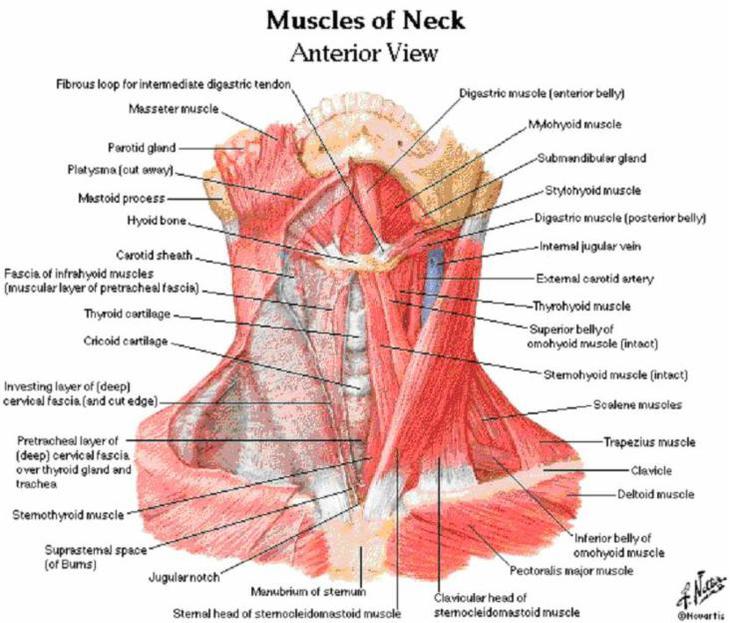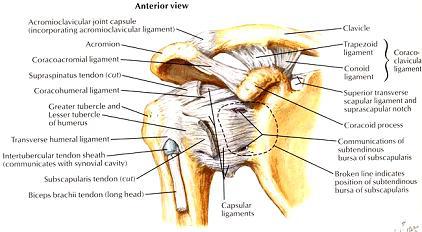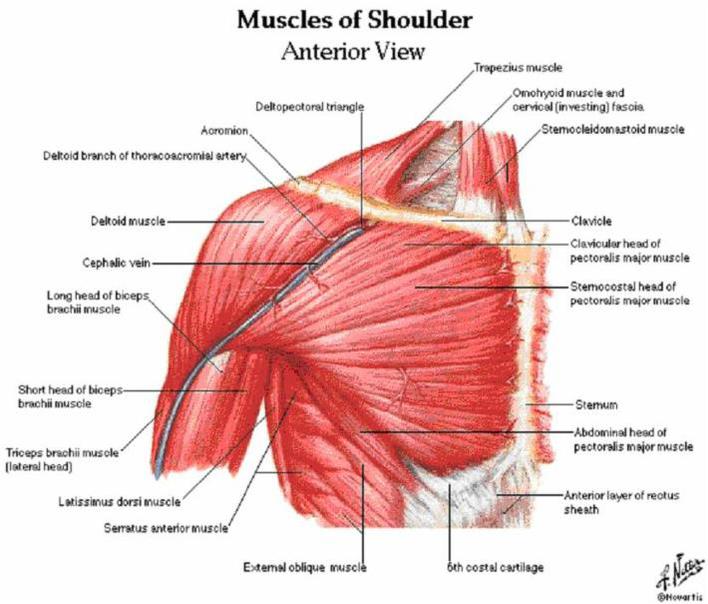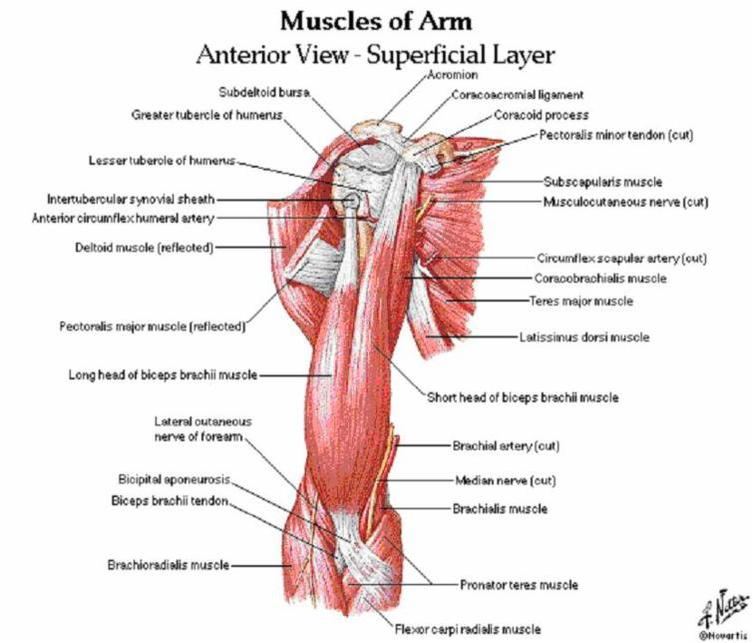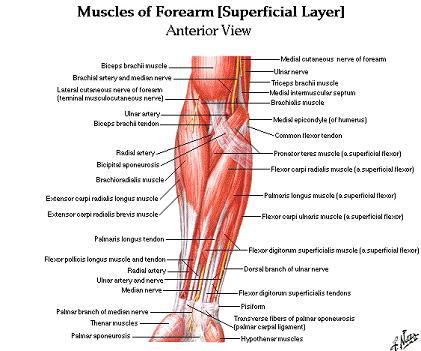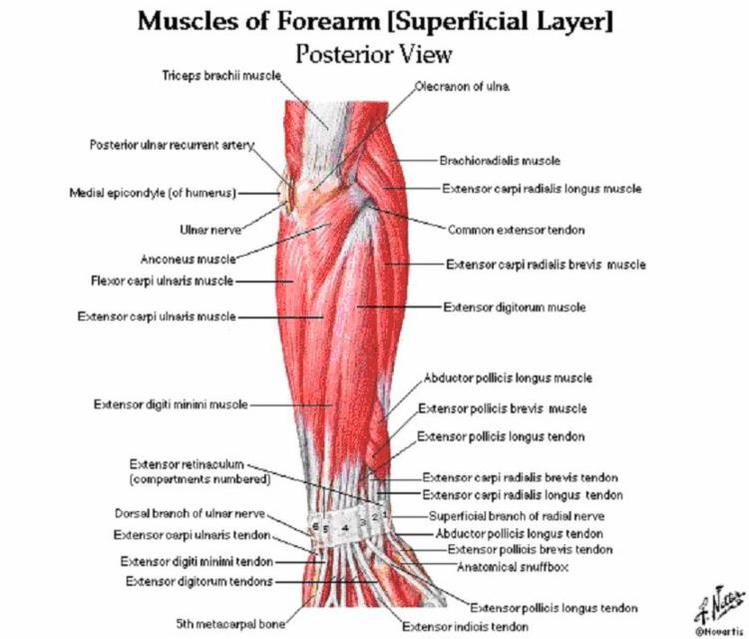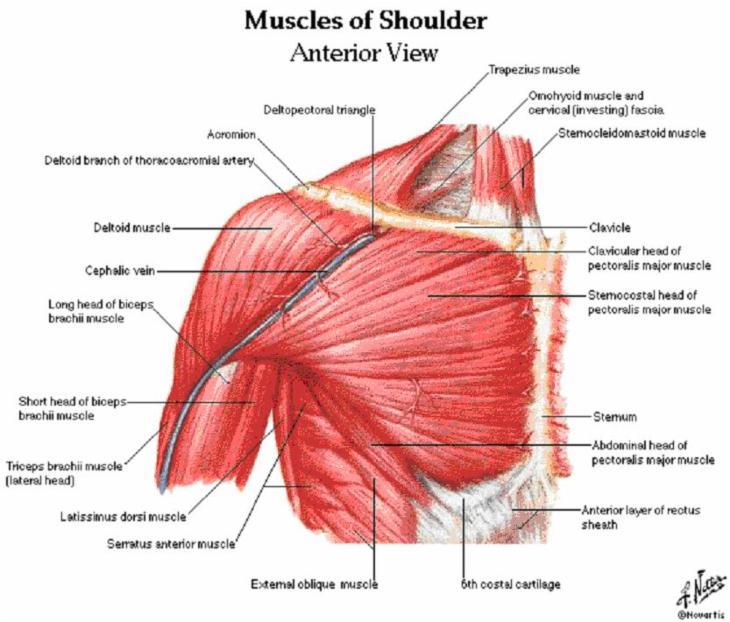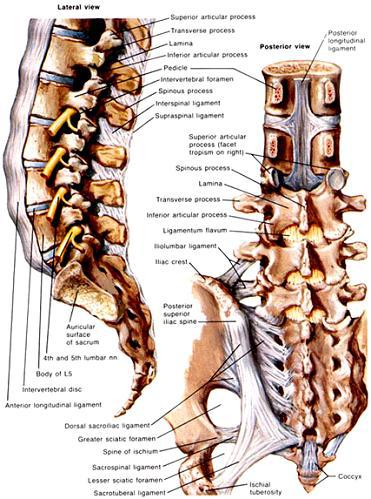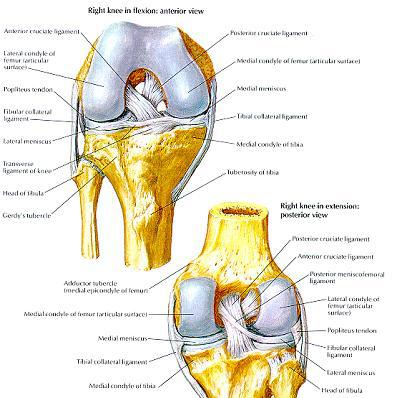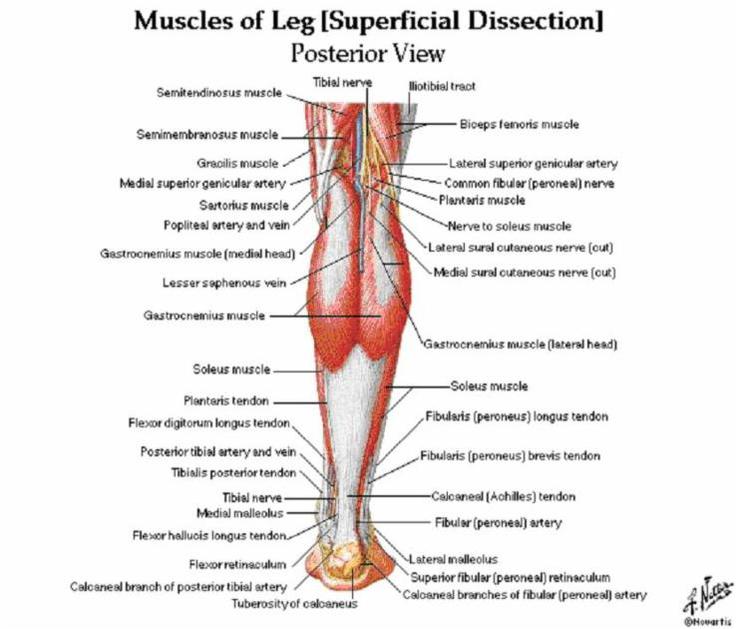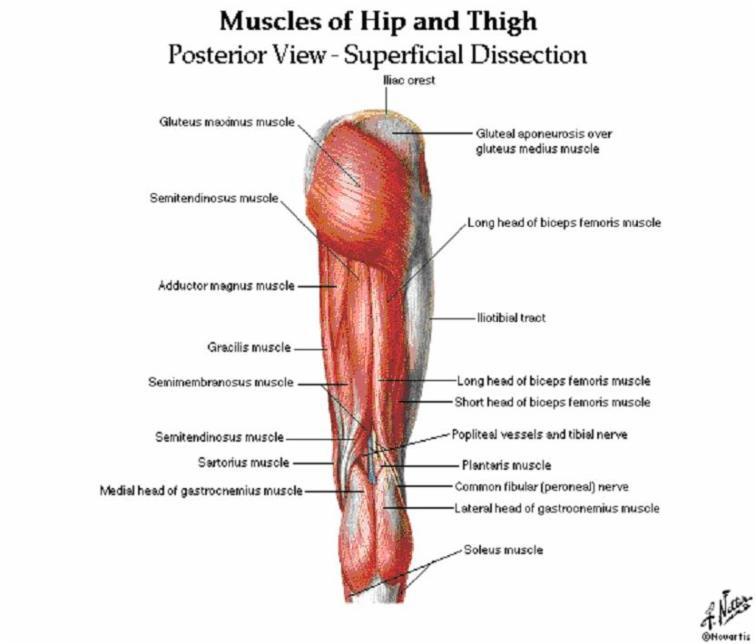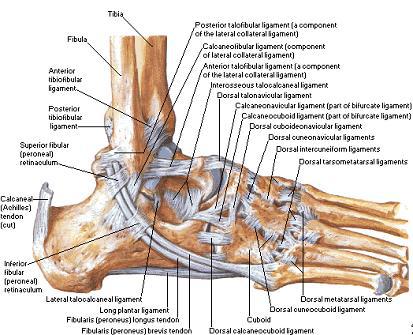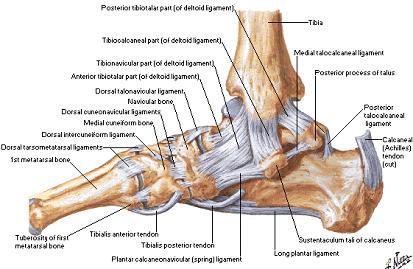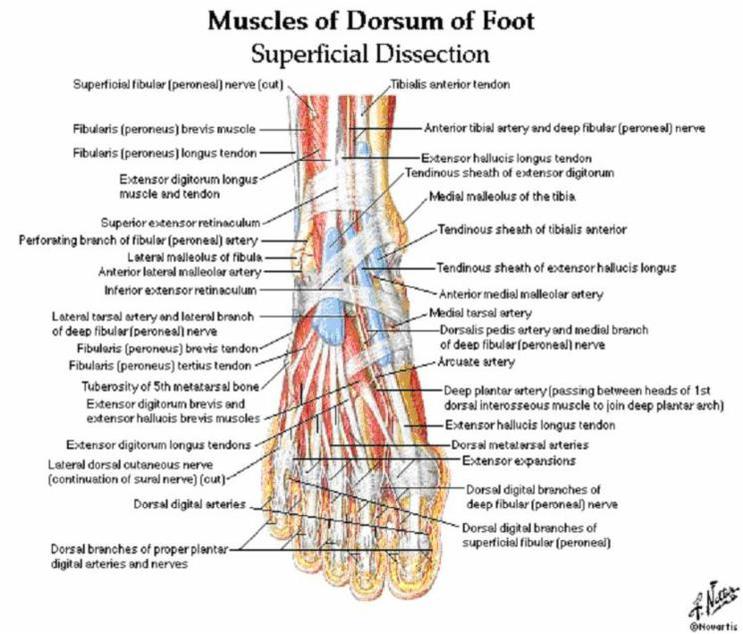
Welcome to VW’s Osteopathy
This page is provided to give an indication of common musculoskeletal problems and injuries in different areas of the body. It provides an indication of some of the problems that Osteopathy can treat. For more information on any of these musculoskeletal problems please contact us.
Headaches
There are a reported 100 different types of headaches, most of them are secondary to other causes. The two most common primary headaches are migraine and tension headache. Medications used to treat various headaches try to intervene in the biochemical chain that results in the symptoms.
Migraines
There are many theories regarding the causes of migraine, but a common thought suggests it is caused by a cycle of vasoconstriction (narrowing) then vasodilation (widening) of the blood vessels of the head. Other theories include the existence of blood shunting vessels that divert arterial blood directly to the veins without ever reaching the head, and also a slowly moving wave of neural activity traversing the cortex of the brain, causing the aura. These theories are only speculation and migraine sufferers may have their own theory for the causing or relieving factors.
Symptoms of migraine:-
Headaches
There are a reported 100 different types of headaches, most of them are secondary to other causes. The two most common primary headaches are migraine and tension headache. Medications used to treat various headaches try to intervene in the biochemical chain that results in the symptoms.
Migraines
There are many theories regarding the causes of migraine, but a common thought suggests it is caused by a cycle of vasoconstriction (narrowing) then vasodilation (widening) of the blood vessels of the head. Other theories include the existence of blood shunting vessels that divert arterial blood directly to the veins without ever reaching the head, and also a slowly moving wave of neural activity traversing the cortex of the brain, causing the aura. These theories are only speculation and migraine sufferers may have their own theory for the causing or relieving factors.
Symptoms of migraine:-
- Severe throbbing head pain usually felt unilaterally and near or over one eye.
- Some experience about 30 minutes prior to an attack focal neurological symptoms (aura) which is more common a in a 'classic' migraine.
- About 1 in 5 have feelings of depression, irritability, restlessness or nausea.
- About 1 in 5 see jagged, or shimmering lights, or lose vision in a specific area (scotoma).
- Hypersensitivity to light, sound or smell is common.
- Migraines can lasts from hours to days.
- There are a variety of different triggers, but the main ones which have been identified, include:-
- Dietary – such as cheese, red wine
- Emotional – such as stress, depression
- Physical – such as fatigue, over-exertion
- Systemic – such as oestrogen cycles
- External stimuli – such as flashing lights
Soft tissue manipulation can
help improve blood flow to the area. Massaging the temples (the side of the forehead) or the parietal (top of
the head) can also help abort or ease an attack. Some forms of migraine are caused or
aggravated by restrictions to the vertebrae in the neck.
A subnucleus of the trigeminal nerve is found at C2/3 in the neck. Irritation at this level causes the trigeminal nerve to release vasoactive substances which causes the vasoconstriction / vasodilation cycle stimulating and causing a migraine. Dysfunction of the upper cervical vertebrae can be treated by articulation or manipulation of the neck. Postural and mobility exercises together with avoiding migraine triggers are also helpful in management. Lymph drainage techniques may also aid in relieving any congestion in the head.
Tension Headache
Symptoms:-
A subnucleus of the trigeminal nerve is found at C2/3 in the neck. Irritation at this level causes the trigeminal nerve to release vasoactive substances which causes the vasoconstriction / vasodilation cycle stimulating and causing a migraine. Dysfunction of the upper cervical vertebrae can be treated by articulation or manipulation of the neck. Postural and mobility exercises together with avoiding migraine triggers are also helpful in management. Lymph drainage techniques may also aid in relieving any congestion in the head.
Tension Headache
Symptoms:-
- Begins morning or early afternoon, it gets progressively worse
- Pain is felt over the eyes, at the back of the head, or as a band around the head, it sometimes refers to the neck and shoulders
- Pain is usually bilateral, constant; a 'tight' feeling may be experienced, and never throbbing in nature
- Lasts from 15 minutes to one week
- Muscle tension is believed to restrict blood flow, there also appears to be a reduction in pain suppression. Stress and depression may also contribute to the cause.
Pain
at the back of the head may be due to compression of the second cervical nerve. This is often attributed to poor posture with
the head held forward of the shoulders and then being held in extension. It is more common if a person has an
increased kyphosis (an increased curve of the upper spine) which will give a
rounded shoulder appearance and cause poor posture in the neck.
Soft tissue treatment to the neck can improve blood flow by releasing tight muscles. Articulation or manipulation to the occipito-atlantal joint can improve posture and help prevent compression to the second cervical nerve, making osteopathic treatment an effective treatment for headache of a cervicogenic nature.
Ligaments of the occipito-atlantal joint
Soft tissue treatment to the neck can improve blood flow by releasing tight muscles. Articulation or manipulation to the occipito-atlantal joint can improve posture and help prevent compression to the second cervical nerve, making osteopathic treatment an effective treatment for headache of a cervicogenic nature.
Ligaments of the occipito-atlantal joint
Muscles
of the cervical spine
Temporomandibular
Joint (TMJ) Dysfunction / Jaw Pain
The TMJ (or jaw) is the most frequently used joint in the body, opening and closing to eat, talk and breathe. The joint moves by a combination of a hinge opening, and a forward sliding action. Inside the joint is a disc, if the joint is dysfunctional the muscles opening the TMJ can pull the disc forward causing the mandible to ride over the joint, creating a click. Typically the jaw will not open in a straight line, but will follow a C or S shaped path to the dysfunctional side. This can be felt by placing both index fingers anterior to the ear canal and opening the jaw slowly, this action should be symmetrical, of one side moves first or protrudes more a dysfunction may be present. This is often asymptomatic in a lot of people.
TMJ Dysfunction can be caused by:-
The TMJ (or jaw) is the most frequently used joint in the body, opening and closing to eat, talk and breathe. The joint moves by a combination of a hinge opening, and a forward sliding action. Inside the joint is a disc, if the joint is dysfunctional the muscles opening the TMJ can pull the disc forward causing the mandible to ride over the joint, creating a click. Typically the jaw will not open in a straight line, but will follow a C or S shaped path to the dysfunctional side. This can be felt by placing both index fingers anterior to the ear canal and opening the jaw slowly, this action should be symmetrical, of one side moves first or protrudes more a dysfunction may be present. This is often asymptomatic in a lot of people.
TMJ Dysfunction can be caused by:-
- Stress and teeth-grinding
- Chewing gum
- Trauma to the jaw
- Loss of teeth, causing an uneven bite
- Arthritis
- Symptoms of TMJ dysfunction:-
- Clicking or popping when opening the mouth
- Jaw pain
- Neck pain
- Headaches
Osteopathic
treatment can involve soft tissue manipulation, stretching and articulation of
the jaw to help balance the muscles of mastication and improve jaw function. Advice and home exercises can also be
prescribed to help restore and maintain proper function.
Neck Pain
The neck is complex and pain can easily be caused by dysfunction of the muscles or vertebrae in the neck. Poor posture often causes the neck muscles to fatigue if overworked, which in turn cause a build up of by-products from constant contraction which can be painful. Vertebrae can also become restricted, limiting the movement of the neck in one or more planes. Dysfunction of the neck can cause headaches, and can also refer pain into the arm, forearm and fingers.
The nerves supplying the arm originate in the neck, and follow a complex path between the vertebrae, through the muscles of the neck, under the clavicle (collar bone) and muscles of the chest into the arm. The nerves can become compressed at many of these sites en-route causing the referred pain into the arm and is commonly referred to as a 'trapped nerve' or 'nerve impingement.'
Osteopathic treatment involves articulation, mobilisation and soft tissue manipulation to restore mobility to the neck, relax the muscles and help flush the area of toxins. Lymph drainage will also help to improved congestion. Posture and mobility exercises can help prevent the condition returning over time.
Shoulder Pain
There are many injuries and conditions of the shoulder that are frequently treated with osteopathy, including:-
Frozen shoulder (adhesive capsulitis) - Typically lasts for approximately 18 months, although soft tissue manipulation and articulation can aid in maintaining and regaining mobility.
Rotator-cuff tears, also referred to as the SITS muscles - Provided the tear is not complete, soft tissue manipulation, strengthening and proprioceptive exercises can improve function in the joint.
Biceps tendonitis - Inflammation of the long head of the biceps as it runs through the bicipital groove of the humerus.
Bursitis - Small synovial fluid sacs becoming inflamed through overuse or trauma.
The most commonly strained muscles are - Deltoid, biceps and the rotator cuff muscles (supraspinatus, infraspinatus, teres minor and subscapularis).
Acromio-clavicular and Sterno-clavicular Joint Dysfunction
The clavicle (collar bone) articulates with the sternum at the front of the chest, and the acromion process of the scapula at the other end. Dysfunction in one of these joints often causes dysfunction at the other end. The acromio-clavicular joint is especially vulnerable as the joint is only supported by ligaments and can be easily strained by lifting heavy objects or by repetitive strain. The sterno-clavicular joint dysfunction can be caused from a seat-belt restraint in a road traffic accident, where the clavicle is restrained by the seat-belt against the inertia of the body. Both joints can also be aggravated by poor posture, as the upper back curves forward and the shoulders rotate inwards which compresses the joints.
Acromio-clavicular and sterno-clavicular joint dysfunction can be improved by articulation and mobilisation of the joints, and correcting postural imbalances in the thoracic spine. Stretching the pectoral muscles also helps open up the chest and allows the shoulders to be seated in a more neutral position.
Neck Pain
The neck is complex and pain can easily be caused by dysfunction of the muscles or vertebrae in the neck. Poor posture often causes the neck muscles to fatigue if overworked, which in turn cause a build up of by-products from constant contraction which can be painful. Vertebrae can also become restricted, limiting the movement of the neck in one or more planes. Dysfunction of the neck can cause headaches, and can also refer pain into the arm, forearm and fingers.
The nerves supplying the arm originate in the neck, and follow a complex path between the vertebrae, through the muscles of the neck, under the clavicle (collar bone) and muscles of the chest into the arm. The nerves can become compressed at many of these sites en-route causing the referred pain into the arm and is commonly referred to as a 'trapped nerve' or 'nerve impingement.'
Osteopathic treatment involves articulation, mobilisation and soft tissue manipulation to restore mobility to the neck, relax the muscles and help flush the area of toxins. Lymph drainage will also help to improved congestion. Posture and mobility exercises can help prevent the condition returning over time.
Shoulder Pain
There are many injuries and conditions of the shoulder that are frequently treated with osteopathy, including:-
Frozen shoulder (adhesive capsulitis) - Typically lasts for approximately 18 months, although soft tissue manipulation and articulation can aid in maintaining and regaining mobility.
Rotator-cuff tears, also referred to as the SITS muscles - Provided the tear is not complete, soft tissue manipulation, strengthening and proprioceptive exercises can improve function in the joint.
Biceps tendonitis - Inflammation of the long head of the biceps as it runs through the bicipital groove of the humerus.
Bursitis - Small synovial fluid sacs becoming inflamed through overuse or trauma.
The most commonly strained muscles are - Deltoid, biceps and the rotator cuff muscles (supraspinatus, infraspinatus, teres minor and subscapularis).
Acromio-clavicular and Sterno-clavicular Joint Dysfunction
The clavicle (collar bone) articulates with the sternum at the front of the chest, and the acromion process of the scapula at the other end. Dysfunction in one of these joints often causes dysfunction at the other end. The acromio-clavicular joint is especially vulnerable as the joint is only supported by ligaments and can be easily strained by lifting heavy objects or by repetitive strain. The sterno-clavicular joint dysfunction can be caused from a seat-belt restraint in a road traffic accident, where the clavicle is restrained by the seat-belt against the inertia of the body. Both joints can also be aggravated by poor posture, as the upper back curves forward and the shoulders rotate inwards which compresses the joints.
Acromio-clavicular and sterno-clavicular joint dysfunction can be improved by articulation and mobilisation of the joints, and correcting postural imbalances in the thoracic spine. Stretching the pectoral muscles also helps open up the chest and allows the shoulders to be seated in a more neutral position.
Arm Pain
Muscle Pain
Any of the muscles of the arm can be strained or overused. The biceps muscle is easily strained or even torn. As its name suggests, it has two heads, the long and short head. The long head runs though the bicipital groove and through the capsule of the shoulder joint. This tendon can easily become inflamed through trauma or overuse, and is easily mistaken for shoulder pain. Drainage techniques can help reduce the inflammation, and tension can be reduced in the biceps to encourage blood flow and improve healing.
Referred Pain
Pain can be referred into the arm from the neck or from impingement of the brachial plexus. The nerves from the neck create a network (plexus) above and behind the clavicle (collar bone). They travel together with the artery and vein supplying the arm. The path runs through muscles in the neck, under the clavicle, over the first rib and underneath pectoralis minor. This nerve and blood supply can be trapped at any point. This is made more likely by poor posture, with the shoulders rotating forwards and inwards. The referred pain can be at any point in the arm, even down into the fingers. Articulation, mobilisation and manipulation of the neck, shoulder and clavicle can all help restore proper function.
Elbow
Common muscular dysfunctions at the elbow are medial and lateral epicondylitis (tennis and golfers elbow). Both are caused by muscles tractioning their insertions and causing inflammation, with the wrist extensors causing tennis elbow and the wrist flexors causing golfers elbow. Both dysfunctions are readily treated by soft tissue manipulation. Ligament sprains at the elbow are less common as the joint is a hinge joint with little accessory movement.
Inflammation of the bursa at the elbow is also relatively common, and can be caused by continually resting on the elbow.
Dysfunction of the head of the radius in the radial groove of the ulna can cause symptoms similar to tennis elbow, or may contribute to the problem. This can be improved by articulation or manipulation of the radial head.
Any of the muscles of the arm can be strained or overused. The biceps muscle is easily strained or even torn. As its name suggests, it has two heads, the long and short head. The long head runs though the bicipital groove and through the capsule of the shoulder joint. This tendon can easily become inflamed through trauma or overuse, and is easily mistaken for shoulder pain. Drainage techniques can help reduce the inflammation, and tension can be reduced in the biceps to encourage blood flow and improve healing.
Referred Pain
Pain can be referred into the arm from the neck or from impingement of the brachial plexus. The nerves from the neck create a network (plexus) above and behind the clavicle (collar bone). They travel together with the artery and vein supplying the arm. The path runs through muscles in the neck, under the clavicle, over the first rib and underneath pectoralis minor. This nerve and blood supply can be trapped at any point. This is made more likely by poor posture, with the shoulders rotating forwards and inwards. The referred pain can be at any point in the arm, even down into the fingers. Articulation, mobilisation and manipulation of the neck, shoulder and clavicle can all help restore proper function.
Elbow
Common muscular dysfunctions at the elbow are medial and lateral epicondylitis (tennis and golfers elbow). Both are caused by muscles tractioning their insertions and causing inflammation, with the wrist extensors causing tennis elbow and the wrist flexors causing golfers elbow. Both dysfunctions are readily treated by soft tissue manipulation. Ligament sprains at the elbow are less common as the joint is a hinge joint with little accessory movement.
Inflammation of the bursa at the elbow is also relatively common, and can be caused by continually resting on the elbow.
Dysfunction of the head of the radius in the radial groove of the ulna can cause symptoms similar to tennis elbow, or may contribute to the problem. This can be improved by articulation or manipulation of the radial head.
Wrist and Hand Pain
Carpal tunnel syndrome is a common problem at the wrist, with the median nerve becoming trapped under the flexor retinaculum when it becomes inflamed. This condition is common in keyboard users, and sufferers often wake at night with pain in the hand that they shake off. This can be improved by drainage techniques and stretching of the flexor retinaculum, helping to avoid surgery of the wrist. The median nerve can also become entrapped between the two heads of pronator teres which also responds well to osteopathic treatment.
Displacement of the carpal bones can also cause pain in the wrist. These bones move in a helicospiral motion to provide the intricate movements of the wrist and hand. They are usually displaced towards the back of the hand and restricting the sliding motions of the joints of the hand. This may contribute to other problems such as tennis elbow, as the body tries to compensate. Articulation and manipulation can help restore the position of the carpals and the function of the wrist.
Rib Dysfunction
Ribs are attached to the vertebrae at the back and to the sternum at the front. The ribs provide the movement required for breathing and provide attachment for muscles of the back, shoulder girdle, neck and the abdominals whilst also protecting some vital organs in the lower section of the rib cage. The joints at the back are complex with most ribs having three articulations with the vertebrae. This renders them liable to dysfunction, often getting fixed during inspiration, in their elevated position. This can then irritate the intercostal nerve which follows the course of the rib.
Rib dysfunctions usually present in the following ways:-
Carpal tunnel syndrome is a common problem at the wrist, with the median nerve becoming trapped under the flexor retinaculum when it becomes inflamed. This condition is common in keyboard users, and sufferers often wake at night with pain in the hand that they shake off. This can be improved by drainage techniques and stretching of the flexor retinaculum, helping to avoid surgery of the wrist. The median nerve can also become entrapped between the two heads of pronator teres which also responds well to osteopathic treatment.
Displacement of the carpal bones can also cause pain in the wrist. These bones move in a helicospiral motion to provide the intricate movements of the wrist and hand. They are usually displaced towards the back of the hand and restricting the sliding motions of the joints of the hand. This may contribute to other problems such as tennis elbow, as the body tries to compensate. Articulation and manipulation can help restore the position of the carpals and the function of the wrist.
Rib Dysfunction
Ribs are attached to the vertebrae at the back and to the sternum at the front. The ribs provide the movement required for breathing and provide attachment for muscles of the back, shoulder girdle, neck and the abdominals whilst also protecting some vital organs in the lower section of the rib cage. The joints at the back are complex with most ribs having three articulations with the vertebrae. This renders them liable to dysfunction, often getting fixed during inspiration, in their elevated position. This can then irritate the intercostal nerve which follows the course of the rib.
Rib dysfunctions usually present in the following ways:-
- Pain in the back, slightly to one side
- Pain in the back and front, feeling like a skewer
- Discomfort when deep breathing, coughing or sneezing
People
often find they have very tender 'knots' between the shoulder blades - these
are usually rib dysfunctions and massage to them will make them sore. They are an extremely common problem that an
Osteopath will see every day. They can
be treated very effectively by manipulation and articulation of the ribs and
also the thoracic spine.
Low Back Pain
The lumbar spine is a complex load bearing area also providing the neural supply to the legs and many internal organs. It is greatly affected by posture and biomechanical dysfunction, and can cause debilitating pain. Back pain is very common and may be due to a variety of tissues:
Low Back Pain
The lumbar spine is a complex load bearing area also providing the neural supply to the legs and many internal organs. It is greatly affected by posture and biomechanical dysfunction, and can cause debilitating pain. Back pain is very common and may be due to a variety of tissues:
- Muscle Strain
- Ligament sprain
- Facet joint irritation
- Nerve irritation
- Disc herniation
- Sacroiliac dysfunction
These
tissues may not necessarily be the cause of the problem, but can be an
irritating factor. A pelvic torsion is a
very common cause of back pain, as it causes an artificial leg length inequality. The base of the spine is then no longer level
and to compensate the spine has to curve sideways, resulting in the muscles on
one side being stretched and on the other side being shortened. This causes muscle strain and can reduce
movement of the vertebrae of the spine causing facet joint inflammation and
pain. Massaging the muscles of the back
will only result in symptomatic relief and the pain will return. Correction of the pelvis is required, and
this can be done by articulation or manipulation. This allows the base of the spine to become
level and allows the spine to return to the neutral position.
Some back pain symptoms can be improved with dramatic results in just one treatment, but not all back pain responds in this manner - it depends on the tissues causing the symptoms. An acute facet joint irritation can respond very well to an initial treatment, whereas a ligament sprain in the back will take far longer to heal, as it has a poor blood supply.
Ligaments of the lumbar spine and sacro-iliac joint
Some back pain symptoms can be improved with dramatic results in just one treatment, but not all back pain responds in this manner - it depends on the tissues causing the symptoms. An acute facet joint irritation can respond very well to an initial treatment, whereas a ligament sprain in the back will take far longer to heal, as it has a poor blood supply.
Ligaments of the lumbar spine and sacro-iliac joint
Hip Pain
Hip Joint
The hip is a very strong joint due to the depth of the cup and strong ligamentous attachments, reducing the risk of injury. The joint is, however, a major weight-bearing joint and is a common site for osteoarthritis. Pain in the hip can be referred from the lumbar spine or the sacroiliac joint. The hip itself can also refer pain to the back or even to the knee. Pain and inflammation to the hip can be relieved by osteopathic treatment. In cases such as arthritis where there is permanent damage to the joint surfaces, osteopathy can help retain as much mobility as is possible and reduce the strain on the joint by ensuring that other joints such as the ankle and knee are functioning optimally.
Muscle
There are many powerful muscles around the hip that can cause pain due to strain, overuse, or from other biomechanical dysfunction. The psoas muscle contains the lumbar nerve plexus and this can become very painful if hypertonic. The sciatic nerve runs under, over or even through the piriformis muscle, this can cause pain down the back of the leg. The iliotibial band, a large ligamentous structure, runs over the greater trochanter and can become very contracted and painful. In addition, it may cause inflammation of the bursa (a synovial fluid filled sac) over the greater trochanter. Osteopathic treatment is very effective in treating the musculature of the hip, as there are a broad range of techniques that can be applied to muscles that are inaccessible to other manual techniques.
Thigh Pain
Anterior Thigh
Pain at the front of the thigh is commonly caused by straining the quadriceps, although the upper lumbar spine may also refer here. The femoral nerve can also become entrapped as it leaves the pelvis. Unbalanced quadriceps can cause an uneven pull on the patella (knee cap) and cause a burning pain at the front of the knee. The quadriceps are easily treated through the soft tissue manipulation and muscle energy techniques of osteopathy.
Posterior Thigh
Pain in the posterior thigh can be referred from the lumbar spine, or from compression of the sciatic nerve, most commonly from a tight piriformis. The hamstrings can also be easily strained from overuse, or shortened due to long periods of sitting. Pelvic dysfunction can also cause a change in tension on the hamstrings as the origin of the muscle is changed. Again osteopathic treatment is effective in treating the soft tissues of the thigh.
Lateral and Medial Thigh
Pain on the outside of the thigh is very often due to a tight iliotibial band. This is a long ligamentous structure running all the way down the side of the thigh. If it becomes contracted, it can become very painful and also alter knee mechanics, as it attaches to the knee and sends fibres to the patella. The muscles of the inner thigh are the adductors, and these pull the leg towards the midline of the body. Groin strain is an injury of the adductors, where they insert on the pelvis. The adductors and iliotibial band can be treated through soft tissue manipulation and stretching exercises. The soft tissue changes may be secondary to alterations in biomechanical dysfunction. Osteopaths are experts in integrating their knowledge of biomechanics into how the patient's symptoms have occurred. This ensures that, where possible, the root cause of the problem is addressed rather than just symptomatic treatment.
Knee Pain
The knee is a very complex joint, with many pain sensitive structures. It is notoriously difficult to examine and identify the cause of the symptoms. The joint has to cope with many minor accessory movements to allow for adaptation and shock absorption during gait. The compromise for this is stability.
Ligaments
The knee has four main ligaments, the medial and lateral collateral ligaments, and the anterior and posterior cruciate ligaments. The most commonly sprained ligament is the medial collateral ligament on the inside of the knee, as this takes the force of an impact from the outside of the knee. This ligament also has fibres attached to the medial meniscus. The cruciate ligaments are inside the joint capsule and when completely torn require surgical repair. Strength and proprioceptive training after a ligament injury helps re-educate the knee to reduce any instability.
Menisci ('cartilage')
The menisci are more commonly know as the 'cartilage' of the knee. They help cushion the joint and provide a larger surface area for the femur to articulate with. The medial meniscus is the most frequently torn, and the lack of blood supply makes it more difficult to heal. Tears cause more problems if they fold over or if material becomes loose in the joint causing locking. Tears can eventually be worn away, or if presenting an everyday problem surgery can be considered.
Bursae
Bursae are fluid filled sacs that reduce friction between different surfaces in the body - usually between muscles or muscle and bone. Around the knee there are at least fourteen bursae, and any one of them can become inflamed from hypertonic muscles, trauma or even infection. Inflamed bursae can mimic many other conditions of the knee, and can be relieved by drainage techniques and reducing the tonicity of the muscles around them.
Patella (knee cap)
The back surface of the patella is V-shaped and is designed to slide up and down a V-shaped groove in the femur. The quadriceps attach to it via the patella ligament, because of the angle of the knee, three of these muscles pull the patella slightly inwards and only one pulls it slightly outwards. If these muscles are imbalanced, or the Q-angle of the knee is increased, this causes wear and inflammation to the back of the knee cap resulting in a burning pain behind the knee. It often comes on after walking or running for some distance, or from being seated for long periods. This condition is readily treated by addressing the tonicity of the muscles involved and giving strengthening exercises to the quadriceps pulling the patella inwards. The problem may also be caused by hip or foot dysfunction affecting the Q-angle of the knee.
Superior Tibio-fibular Joint
This joint is a small joint very close to the knee that may mimic knee pain or affect the functioning of the knee. This may be due to a dysfunction of the foot causing restriction of the fibula. This can be very easily treated by articulation and manipulation, addressing any foot dysfunction and treating any resultant muscular dysfunction.
Ligaments of the knee
Hip Joint
The hip is a very strong joint due to the depth of the cup and strong ligamentous attachments, reducing the risk of injury. The joint is, however, a major weight-bearing joint and is a common site for osteoarthritis. Pain in the hip can be referred from the lumbar spine or the sacroiliac joint. The hip itself can also refer pain to the back or even to the knee. Pain and inflammation to the hip can be relieved by osteopathic treatment. In cases such as arthritis where there is permanent damage to the joint surfaces, osteopathy can help retain as much mobility as is possible and reduce the strain on the joint by ensuring that other joints such as the ankle and knee are functioning optimally.
Muscle
There are many powerful muscles around the hip that can cause pain due to strain, overuse, or from other biomechanical dysfunction. The psoas muscle contains the lumbar nerve plexus and this can become very painful if hypertonic. The sciatic nerve runs under, over or even through the piriformis muscle, this can cause pain down the back of the leg. The iliotibial band, a large ligamentous structure, runs over the greater trochanter and can become very contracted and painful. In addition, it may cause inflammation of the bursa (a synovial fluid filled sac) over the greater trochanter. Osteopathic treatment is very effective in treating the musculature of the hip, as there are a broad range of techniques that can be applied to muscles that are inaccessible to other manual techniques.
Thigh Pain
Anterior Thigh
Pain at the front of the thigh is commonly caused by straining the quadriceps, although the upper lumbar spine may also refer here. The femoral nerve can also become entrapped as it leaves the pelvis. Unbalanced quadriceps can cause an uneven pull on the patella (knee cap) and cause a burning pain at the front of the knee. The quadriceps are easily treated through the soft tissue manipulation and muscle energy techniques of osteopathy.
Posterior Thigh
Pain in the posterior thigh can be referred from the lumbar spine, or from compression of the sciatic nerve, most commonly from a tight piriformis. The hamstrings can also be easily strained from overuse, or shortened due to long periods of sitting. Pelvic dysfunction can also cause a change in tension on the hamstrings as the origin of the muscle is changed. Again osteopathic treatment is effective in treating the soft tissues of the thigh.
Lateral and Medial Thigh
Pain on the outside of the thigh is very often due to a tight iliotibial band. This is a long ligamentous structure running all the way down the side of the thigh. If it becomes contracted, it can become very painful and also alter knee mechanics, as it attaches to the knee and sends fibres to the patella. The muscles of the inner thigh are the adductors, and these pull the leg towards the midline of the body. Groin strain is an injury of the adductors, where they insert on the pelvis. The adductors and iliotibial band can be treated through soft tissue manipulation and stretching exercises. The soft tissue changes may be secondary to alterations in biomechanical dysfunction. Osteopaths are experts in integrating their knowledge of biomechanics into how the patient's symptoms have occurred. This ensures that, where possible, the root cause of the problem is addressed rather than just symptomatic treatment.
Knee Pain
The knee is a very complex joint, with many pain sensitive structures. It is notoriously difficult to examine and identify the cause of the symptoms. The joint has to cope with many minor accessory movements to allow for adaptation and shock absorption during gait. The compromise for this is stability.
Ligaments
The knee has four main ligaments, the medial and lateral collateral ligaments, and the anterior and posterior cruciate ligaments. The most commonly sprained ligament is the medial collateral ligament on the inside of the knee, as this takes the force of an impact from the outside of the knee. This ligament also has fibres attached to the medial meniscus. The cruciate ligaments are inside the joint capsule and when completely torn require surgical repair. Strength and proprioceptive training after a ligament injury helps re-educate the knee to reduce any instability.
Menisci ('cartilage')
The menisci are more commonly know as the 'cartilage' of the knee. They help cushion the joint and provide a larger surface area for the femur to articulate with. The medial meniscus is the most frequently torn, and the lack of blood supply makes it more difficult to heal. Tears cause more problems if they fold over or if material becomes loose in the joint causing locking. Tears can eventually be worn away, or if presenting an everyday problem surgery can be considered.
Bursae
Bursae are fluid filled sacs that reduce friction between different surfaces in the body - usually between muscles or muscle and bone. Around the knee there are at least fourteen bursae, and any one of them can become inflamed from hypertonic muscles, trauma or even infection. Inflamed bursae can mimic many other conditions of the knee, and can be relieved by drainage techniques and reducing the tonicity of the muscles around them.
Patella (knee cap)
The back surface of the patella is V-shaped and is designed to slide up and down a V-shaped groove in the femur. The quadriceps attach to it via the patella ligament, because of the angle of the knee, three of these muscles pull the patella slightly inwards and only one pulls it slightly outwards. If these muscles are imbalanced, or the Q-angle of the knee is increased, this causes wear and inflammation to the back of the knee cap resulting in a burning pain behind the knee. It often comes on after walking or running for some distance, or from being seated for long periods. This condition is readily treated by addressing the tonicity of the muscles involved and giving strengthening exercises to the quadriceps pulling the patella inwards. The problem may also be caused by hip or foot dysfunction affecting the Q-angle of the knee.
Superior Tibio-fibular Joint
This joint is a small joint very close to the knee that may mimic knee pain or affect the functioning of the knee. This may be due to a dysfunction of the foot causing restriction of the fibula. This can be very easily treated by articulation and manipulation, addressing any foot dysfunction and treating any resultant muscular dysfunction.
Ligaments of the knee
Lower Leg Pain
Calf Pain
The main two muscles of the calf are the soleus and gastrocnemius, and can cause tremendous pain when strained. They have to deal with tremendous loads as bodyweight is amplified during walking, running and jumping. Occasionally the Achilles tendon can rupture with an audible crack requiring surgical repair. Stretching and deep soft tissue treatment can help treat strained calf muscles and Achilles tendonitis.
Foot and Ankle Pain
Ankle
The anterior talo-fibular ligament is the most commonly sprained ligament in the body, usually when rolling over on the outside of the foot. This ligament contains many nerve endings (which is why it is so painful), that informs the brain of the position of the ankle in space. Damage to the ligaments disrupts this mechanism, which is why repeated ankle sprains are common. Treatment to the ankle helps re-educate the brain of the position of the ankle to reduce further occurrence.
Ankle sprains can also pull on the fibula and cause problems at the fibula head, often presenting as a knee problem.
Foot
Pain on the sole of the foot can often be due to inflammation of the plantar fascia, a ligamentous structure that helps maintains the arches of the foot. The pain is often very sharp and stabbing in nature. This can be placed in traction pulling at its insertion into the heel and heel spur can be a consequence.
The foot is a very complex structure and dysfunction can result between any of the bones of the foot causing restricted movement and altered gait. This can affect other parts of the body such as the knee hip or back, as the body tries to compensate for the structural change. Osteopathic treatment to the foot and ankle restores the biomechanic functioning of the complex, relieving pain and preventing dysfunction from ascending through the rest of the musculoskeletal system.
Ligaments of the foot and ankle – medial view
Calf Pain
The main two muscles of the calf are the soleus and gastrocnemius, and can cause tremendous pain when strained. They have to deal with tremendous loads as bodyweight is amplified during walking, running and jumping. Occasionally the Achilles tendon can rupture with an audible crack requiring surgical repair. Stretching and deep soft tissue treatment can help treat strained calf muscles and Achilles tendonitis.
Foot and Ankle Pain
Ankle
The anterior talo-fibular ligament is the most commonly sprained ligament in the body, usually when rolling over on the outside of the foot. This ligament contains many nerve endings (which is why it is so painful), that informs the brain of the position of the ankle in space. Damage to the ligaments disrupts this mechanism, which is why repeated ankle sprains are common. Treatment to the ankle helps re-educate the brain of the position of the ankle to reduce further occurrence.
Ankle sprains can also pull on the fibula and cause problems at the fibula head, often presenting as a knee problem.
Foot
Pain on the sole of the foot can often be due to inflammation of the plantar fascia, a ligamentous structure that helps maintains the arches of the foot. The pain is often very sharp and stabbing in nature. This can be placed in traction pulling at its insertion into the heel and heel spur can be a consequence.
The foot is a very complex structure and dysfunction can result between any of the bones of the foot causing restricted movement and altered gait. This can affect other parts of the body such as the knee hip or back, as the body tries to compensate for the structural change. Osteopathic treatment to the foot and ankle restores the biomechanic functioning of the complex, relieving pain and preventing dysfunction from ascending through the rest of the musculoskeletal system.
Ligaments of the foot and ankle – medial view
Ligaments
of the foot and ankle – lateral view
Thoracic / Mid and Upper Back Pain
Muscle Strain
There are many muscles of the back that can be strained through overuse, sport, or poor posture. The muscles around the shoulder blades are particularly prone to becoming overused, especially as posture becomes poor and the back rounds. VDU operators and drivers are at risk of muscle strain because of continually holding out their arms out in front of them. Neuromuscular technique is particularly effective at treating tender points in the muscles around the shoulder blade.
Vertebral Dysfunction
The vertebrae in the thoracic spine are restricted in their mobility due to the attachment of the ribs. The muscles of the spine often become hypertensive reducing the movement of the vertebrae. This leads to pain as the joint surfaces are compressed, the joints become irritated and the lack of movement stops the products of metabolism from being pumped away. The lack of mobility can in turn cause rib dysfunction. Articulation and manipulation to the spine can help restore the mobility and re-educate the muscles to help prevent them clamping down.
Muscle Strain
There are many muscles of the back that can be strained through overuse, sport, or poor posture. The muscles around the shoulder blades are particularly prone to becoming overused, especially as posture becomes poor and the back rounds. VDU operators and drivers are at risk of muscle strain because of continually holding out their arms out in front of them. Neuromuscular technique is particularly effective at treating tender points in the muscles around the shoulder blade.
Vertebral Dysfunction
The vertebrae in the thoracic spine are restricted in their mobility due to the attachment of the ribs. The muscles of the spine often become hypertensive reducing the movement of the vertebrae. This leads to pain as the joint surfaces are compressed, the joints become irritated and the lack of movement stops the products of metabolism from being pumped away. The lack of mobility can in turn cause rib dysfunction. Articulation and manipulation to the spine can help restore the mobility and re-educate the muscles to help prevent them clamping down.

